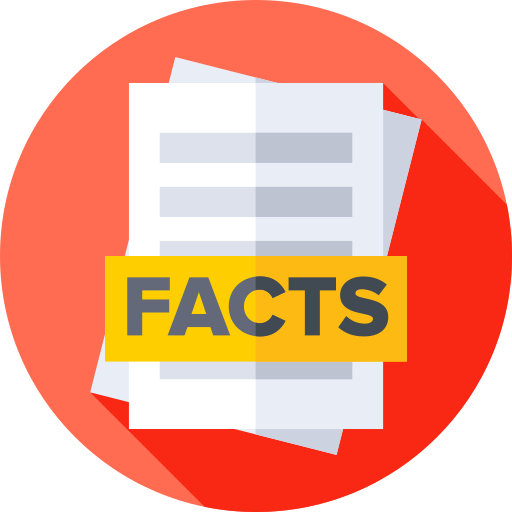Sweden - Geography

Here, let us take a look at the Geography of Sweden. Strategic location along Danish Straits linking Baltic and North Seas; Sweden has almost 100,000 lakes, the largest of which, Vanern, is the third-largest in Europe. Mother's mean age at first birth is 29.7 years (2020 est.) (), whereas, the Maternal mortality ratio is 4 deaths/100,000 live births (2023 est.)
Geographical data of Sweden
| Location | Northern Europe, bordering the Baltic Sea, Gulf of Bothnia, Kattegat, and Skagerrak, between Finland and Norway |
|---|---|
| Geographic coordinates | 62 00 N, 15 00 E |
| Map references | Europe |
| Tarrain | mostly flat or gently rolling lowlands; mountains in west |
| Natural Resources | iron ore, copper, lead, zinc, gold, silver, tungsten, uranium, arsenic, feldspar, timber, hydropower |
| Natural Hazards | ice floes in the surrounding waters, especially in the Gulf of Bothnia, can interfere with maritime traffic |
| Irrigated Land | 510 sq km (2016) |
| Major rivers (by length in km) | |
| Major aquifers | |
| Land Boundaries | 2,211 km |
| Border Countries | Finland 545 km; Norway 1,666 km |
| Coastline | 3,218 km |
| Climate | temperate in south with cold, cloudy winters and cool, partly cloudy summers; subarctic in north |
| Area | |
| Total Area | |
| Land Area | 410,335 sq km |
| Water Area | 39,960 sq km |
| comparative Area | almost three times the size of Georgia; slightly larger than California |
| Maritime Claims | |
| Territorial sea | 12 nm (adjustments made to return a portion of straits to high seas) |
| Exclusive economic zone | agreed boundaries or midlines |
| Continental shelf | 200-m depth or to the depth of exploitation |
| Elevations | |
| Highest point | Kebnekaise South 2,100 m |
| Lowest point | reclaimed bay of Lake Hammarsjon, near Kristianstad -2.4 m |
| Mean elevation | 320 m |
| Land Use | |
| Agricultural land | 7.3% (2023 est.) |
| Agricultural land: arable land | arable land: 6.2% (2023 est.) |
| Agricultural land: permanent crops | permanent crops: 0% (2023 est.) |
| Agricultural land: permanent pasture | permanent pasture: 1.1% (2023 est.) |
| Forest | 68.6% (2023 est.) |
| Other | 23.8% (2023 est.) |
Population Distribution
Most of the population lives in the south where the climate is milder and there is better connectivity to mainland Europe; population clusters are found along the Baltic coast in the east; the interior areas of the north remain sparsely populated
People and Society
In Sweden, the different Ethnic groups are such that we have:
Swedish 79.6%, Syrian 1.9%, Iraqi 1.4%, Finnish 1.3%, other 15.8%
(2022 est.)| Population | |
|---|---|
| Pop growth rate | 0.51% (2024 est.) |
| Birth rate | 10.7 births/1,000 population (2024 est.) |
| Death rate | 9.6 deaths/1,000 population (2024 est.) |
| Health expenditure | |
| Physicians Density | |
| Hospital bed Density | 2 beds/1,000 population (2020 est.) |
| Total fertility rate | 1.67 children born/woman (2024 est.) |
| Gross reproduction rate | 0.8 (2024 est.) |
| Contraceptive prevalence rate | |
| Est married women (ages 15-49) | 53.4% (2023 est.) |
| Literacy | |
| Education expenditures | |
| Net Migration rate | 4 migrant(s)/1,000 population (2024 est.) |
| Nationality | Swedish | Swede(s) |
| Languages | |
| Religions | Church of Sweden (Lutheran) 53.9%, other (includes Roman Catholic, Orthodox, Baptist, Muslim, Jewish, and Buddhist) 8.9%, none or unspecified 37.2% (2021 est.) |
| Age Structure | |
| 0-14 years | 17.1% (male 934,668/female 880,310) |
| 15-64 years | 62.1% (male 3,365,754/female 3,208,248) |
| 65 years and over | 20.8% (2024 est.) (male 1,032,279/female 1,168,576) |
| Dependency Ratios | |
| Total dependency ratio | 61.1 (2024 est.) |
| Youth dependency ratio | 27.6 (2024 est.) |
| Elderly dependency ratio | 33.5 (2024 est.) |
| Potential support ratio | 3 (2024 est.) |
| Median Age | |
| Total | 41.1 years (2024 est.) |
| Male | 40.1 years |
| Female | 42.1 years |
| Urbanization | |
| Urban population | 88.7% of total population (2023) |
| Rate of urbanization | 0.89% annual rate of change (2020-25 est.) |
| Major urban areas (Pop) | 1.700 million STOCKHOLM (capital) (2023). |
| Sex Ratio | |
| At birth | 1.06 male(s)/female |
| 0-14 years | 1.06 male(s)/female |
| 15-64 years | 1.05 male(s)/female |
| 65 years and over | 0.88 male(s)/female |
| Total population | 1.01 male(s)/female (2024 est.) |
| Infant Motality | |
| Total | 2.3 deaths/1,000 live births (2024 est.) |
| Male | 2.5 deaths/1,000 live births |
| Female | 2 deaths/1,000 live births |
| Life Expectancy at birth | |
| Total population | 82.9 years (2024 est.) |
| Male | 81.2 years |
| Female | 84.7 years |
| Drinking Water Sources | |
| Improved: urban | urban: 99.8% of population (2022 est.) |
| Improved: rural | rural: 99.6% of population (2022 est.) |
| Improved: total | total: 99.7% of population (2022 est.) |
| Unimproved: urban | urban: 0.2% of population (2022 est.) |
| Unimproved: rural | rural: 0.4% of population (2022 est.) |
| Unimproved: total | total: 0.3% of population (2022 est.) |
| Sanitation facility acess | |
| Improved: urban | urban: 99.6% of population (2022 est.) |
| Improved: rural | rural: 99.5% of population (2022 est.) |
| Improved: total | total: 99.6% of population (2022 est.) |
| Unimproved: urban | urban: 0.4% of population (2022 est.) |
| Unimproved: rural | rural: 0.5% of population (2022 est.) |
| Unimproved: total | total: 0.4% of population (2022 est.) |
| Alcohol consumption per capita | |
| Total | 7.1 liters of pure alcohol (2019 est.) |
| Beer | 2.6 liters of pure alcohol (2019 est.) |
| Wine | 3.4 liters of pure alcohol (2019 est.) |
| Spirits | 1 liters of pure alcohol (2019 est.) |
| Other alcohols | 0.1 liters of pure alcohol (2019 est.) |
| Tobacco use | |
| Total | 19.9% (2025 est.) |
| Male | 25.8% (2025 est.) |
| Female | 13.9% (2025 est.) |
Demographic profile
All Important Facts about Sweden
Want to know more about Sweden? Check all different factbooks for Sweden below.









